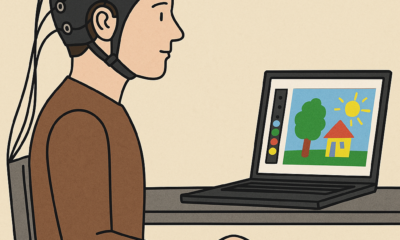News
Americans Are Waking Up to the Homelessness Crisis. Here’s How to Fix It.

On April 22, the U.S. Supreme Court heard oral arguments in City of Grants Pass, Oregon v. Johnson—a case which aims to determine whether local governments can make it a crime for someone to live outside and unsheltered if they have no home.
How can homelessness result – or be stopped?
Proponents argue that criminalizing public camping is a necessary measure for cities seeking to deal with unsafe and unsanitary homeless encampments. Opponents argue that criminalizing the involuntarily homeless only compounds injustice and inequality.
The hotly contested case is the latest eruption of a long-simmering problem that is rapidly becoming a full-blown crisis in communities around the country. And regardless of what the Supreme Court decides, a stubborn fact remains: Neither strict nor lenient laws will end homelessness. But a systematic and community-wide focus on homelessness prevention measures just might.
Homelessness prevention programs understand cashflow, not character, to be primary drivers of today’s homelessness crisis. A January 25 report from Harvard’s Joint Center for Housing Studies estimated that over 650,000 Americans experienced homelessness in 2023—up almost 50% from 2015. Costs of renting and home ownership have skyrocketed while wages largely stagnate. The Harvard report found that half of U.S. households are “cost-burdened” (meaning that 30-50% of monthly income goes to housing), and 12 million people are “severely cost-burdened.” These Americans stand one accident, health setback, or employment disruption away from eviction.
Becoming homeless is a contingent event, in other words, not one that’s inevitable or irreversible. Recognizing the alarmingly thin line between housed and homeless allows us to dispel hazy thinking surrounding the homelessness crisis—and to identify effective, cost-efficient solutions.
The Sait Vincent de Paul program
“An ounce of prevention is worth a pound of cure,” the old saying goes. This principle has long informed the charitable work of the Society of St. Vincent de Paul in over 1,000 cities around the country. For almost 200 years, our “Vincentian” volunteers have provided Christian aid to those suffering poverty. These programs typically involve home visits, personalized resources, engagement with landlords, crafting a “Stability Plan,” and financial assistance in making rent and paying utilities.
SVDP programs can be grouped into two buckets. “Prevention” programs work to keep people in their homes. “Diversion” programs, meanwhile, find safe places for people to stay that divert them from entering the homelessness system of shelters and transitional housing—whether via a short-term stay in a motel or travel funds to get to a relative or friend.
Encouragingly, the evidence strongly suggests that temporary assistance produces long-lasting positive effects. A recent study conducted by Notre Dame’s Lab for Economic Opportunities (LEO) found that persons who received an average of $2,000 in emergency financial assistance were “81 percent less likely to become homeless within six months of enrollment and 73 percent less likely within 12 months.”
That’s a drastic decrease in the number of people entering homelessness, which in turn alleviates the social ills attendant on homelessness—illness, crime, educational disruption, bankruptcies, strain on the social safety net, and more.
Broad scope of the program
Cumulatively, SVDP chapters nationwide minister to thousands of at-risk families. Our total outlay on our Homelessness Prevention programs eclipses $60 million. From an economic perspective, it’s far more efficient to prevent homelessness than to treat it. But of course, homelessness is not simply an economic phenomenon. It corrodes our basic dignity as creatures created in the image of God.
Vincentians participate in the human stories behind the percentages every day. They are people like Jessie Sandau, a single mother in Scottsdale seeking to provide a stable life for her young daughter. When a car accident derailed her transportation and childcare setup last year, Jessie lost her job, leaving her without reserves to make rent and pay for food. She quickly found a better job, allowing her to work from home and watch her daughter. But it wouldn’t start for weeks, and she’d run out of cash.
Jessie Sandau’s situation shows why temporary assistance can be so effective in preventing homelessness. She didn’t need long-term support; she just needed to cover the gap and stave off eviction. Friends at church connected her to SVDP Phoenix, which helped her with $1,350 in rental assistance. That was all it took to keep her family housed and happy.
Solving most of the homelessness problem
Granted, this “ounce of prevention” with short-term financial assistance isn’t a cure-all. It doesn’t address the dearth of affordable housing. (In Maricopa County, for instance, a worker earning $13.85 an hour would need to work over seventy hours a week to afford rent on a typical one-bedroom apartment.) Nor do prevention programs ameliorate homelessness driven by failures in addressing mental health or drug prevention and treatment.
But homelessness prevention and diversion programs work. They save lives, dignity, and dollars, and more communities should invest in them. In our experience, these programs succeed because they are personal and flexible: personally administered and rooted in Christian charity; and flexible in the assistance they offer—whether it’s repairing a car, paying a utility bill, or working directly with a landlord to keep eviction at bay.
Avoiding administrative complication
Precarious living situations don’t fit neatly into bureaucratic boxes. And administrative layers add complexity to application processes, deterring the very people who most need help. Flexible funding, personally administered ensures that households in crisis get help as quickly as possible. The simpler the process, the more quickly we can stabilize families and entire communities.
As more Americans realize the severity of our homelessness crisis, we have a tremendous opportunity to work together to restore stability and dignity to neighbors living on the brink. As the legal battle over criminalizing homelessness encampments grab the headlines, let’s remember the old adage: An ounce of prevention is worth a pound of cure.
This article was originally published by RealClearPolicy and made available via RealClearWire.
John Berry, President of the National Council of the United States, Society of St. Vincent de Paul—a 90,000 member faith-based volunteer organization that provides support to people in need at over 4,000 locations in the United States
-

 Guest Columns5 days ago
Guest Columns5 days agoShe Saved Her Life. 7-Eleven Fired Her
-

 Civilization5 days ago
Civilization5 days agoDemocrats’ Viral Video Lights Match to the Republic
-

 Civilization4 days ago
Civilization4 days agoThe AI Challenge: Palantir, the Pope, and Paul Kingsnorth
-

 Guest Columns4 days ago
Guest Columns4 days agoWaste of the Day: What’s Big, Grey And Costs $350K?
-

 Civilization4 days ago
Civilization4 days agoNo Kings, No Queens, No Blind Loyalty
-

 Civilization2 days ago
Civilization2 days agoThe World Needs to Restore Balance and Objectivity on Climate
-

 Executive3 days ago
Executive3 days agoWaste of the Day: California’s $450 Million 911 Center Doesn’t Work
-

 Civilization2 days ago
Civilization2 days agoFree Speech Requires a Pious Commitment

